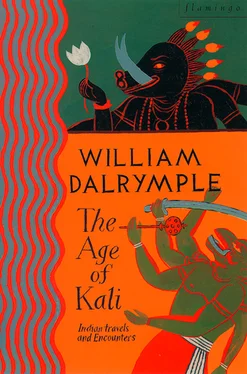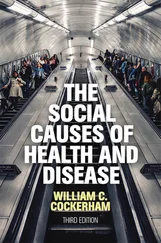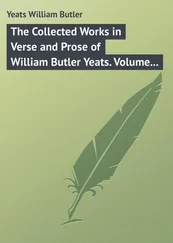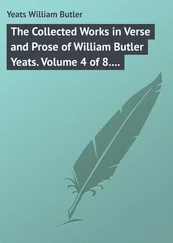When Delhi newspapers publish articles on Bihar’s disorders and atrocities, they tend to make a point of emphasising the state’s ‘backwardness’. What is needed, they say, is development: more roads, more schools, more family-planning centres. But as the ripples of political and caste violence spread from Patna out in to the rest of north India, it seems likely that Bihar could be not so much backward as forward: a trend-setter for the rest of the country. In a very real sense, Bihar may be a kind of Heart of Darkness, pumping violence and corruption, pulse after pulse, out in to the rest of the subcontinent. The first ballot-rigging recorded in India took place in Bihar in the 1962 general election. Thirty years later, it is common across the country. The first example of major criminals winning parliamentary seats took place in Bihar in the 1980 election. Again, it is now quite normal all over India.
So serious and infectious is the Bihar disease that it is now throwing in to question the whole notion of an Indian economic miracle. The question is whether the prosperity of the south and west of the country can outweigh the moral decay which is spreading out from Bihar and the east. Few doubt that if the ‘Bihar effect’ – corruption, lawlessness, marauding caste armies and the breakdown of government – does prevail and overcome the positive forces at work, then, as Uttam Sengupta put it: ‘India could make what happened in Yugoslavia look like a picnic.’
Everyone I talked to that week in Patna agreed on one thing: behind much of Bihar’s violence lay the running sore of the disintegrating caste system.
One of the worst-affected areas was the country around Barra: the Jehanabad District, to the south of Patna. There, two rival militias were at work: the Savarna Liberation Front, which represented the interests of the high-caste landowning Bhumihars, and the Maoist Communist Centre, which took the part of the lower castes and Untouchables who farmed the Bhumihars’ fields. Week after week, the Bhumihars would go ‘Harijan hunting’, setting off in convoys of jeeps to massacre ‘uppity Untouchables’, ‘to make an example’; in retaliation, the peasants would emerge from the fields at night and silently behead an oppressive landlord or two. The police did little to protect either group.
Similar battles take place across the width of Bihar, and this caste warfare has provided great opportunities for criminals wishing to gain a foothold in Bihar’s political arena. Anand Mohan Singh first made his name as the protector of the upper castes against a rival low-caste outlaw-MP, Pappu Yadav. In the same way, Pappu Yadav first gained his seat in parliament by leading a low-caste guerrilla army against high-caste landlords and attempting a Bihari variant of ethnic cleansing, emptying his constituency of Rajput and Brahmin families. In June 1991, whilst he was engaged in this work, three cases of murder were lodged against him, and he was also booked under the National Security Act for creating a ‘civil war situation’. In the current parliament he remains the MP for the north Bihar district of Purnea.
The closer you look, the more clear it becomes that caste hatred and, increasingly, caste warfare lie at the bottom of most of Bihar’s problems. The lower castes, so long oppressed, have now begun to assert themselves, while the higher castes have begun to fight back in an attempt to hold on to their ground. Moreover, job reservations for the lower castes have begun to be fitfully introduced around the country, reawakening an acute awareness of caste at every level of society. The proportion of reserved jobs varies from state to state – from 2 per cent in Haryana to 65 per cent in Tamil Nadu – but all over India a major social revolution is beginning to take place. This is particularly marked in institutions like the Indian Administrative Service, where prior to the introduction of reservations the Brahmins, who make up just 5 per cent of the population, filled 58 per cent of the jobs.
In the 1960s and seventies most educated Indians believed that caste was beginning to die out. Now it has quite suddenly become the focus of national attention, and arguably the single most important issue in the country’s politics.
Later that afternoon when I turned up at the Chief Minister’s residence I found Laloo sitting outside, his legs raised on a table. He was surrounded by the now familiar circle of toughs and sycophants. Their appearance reminded me of the incident on the train when the civil servant had been beaten up by one of Laloo’s MPs, and I asked him if the press reports had been accurate.
‘Why don’t you ask the man responsible?’ replied Laloo. He waved his hand at one of the MPs sitting to his left. ‘This is Mumtaz Ansari.’
Ansari, a slight, moustachioed figure in white pyjamas, giggled.
‘It is a fabricated story,’ he said, a broad grin on his face. ‘A baseless story, the propaganda of my enemies.’
‘It was only his party workers who beat the man up,’ explained Laloo. ‘Ansari had nothing to do with it.’
‘So the man was beaten up?’
‘A few slaps only,’ said Ansari. ‘The fellow was misbehaving.’
‘What action have you taken?’ I asked Laloo.
‘I told my MPs: “You must not behave like this. A citizen is the owner of the country. We are just servants.”’
‘That’s all you did?’
‘I have condemned what happened,’ said Laloo, smiling from ear to ear. ‘I have condemned Mr Ansari.’
Both Laloo and Ansari burst out laughing. Laloo then finished the cup of tea he was drinking, threw the dregs over his shoulder and dropped the cup on the grass, calling for a turbaned bearer to pick it up. ‘Come,’ he said, standing up and indicating that I should do the same. ‘This was a small incident only. Let me show you my farm.’
Before I could argue, Laloo had taken my arm. He led me around what had once been the neat rose garden of the British Governor’s residence. Apart from a small patch of lawn at the back of the house, the whole plot had been ploughed up and turned in to a series of fields. In one corner stood Laloo’s fishpond and beehives; in another his dairy farm, rabbit hutches, cattle and buffalo sheds. In between were acres of neat furrows planted with chillies, spinach and potatoes. ‘This is satthu ,’ he said. ‘Very good for farting.’
‘Who eats all this?’ I asked.
‘I do – along with my wife and family. We villagers like fresh produce. The rest we distribute to the poor.’
While we examined a new threshing machine manned by one of Laloo’s cousins, Laloo talked of the Brahmin political establishment.
‘The BJP [Bharatiya Janata Party] and the Congress are both Brahminical parties,’ he said. ‘The backward castes have no reason to vote for them. Already they have realised this in Bihar. In time they will realise this everywhere. The support of these parties will dry up like a dirty puddle on a summer’s day.
‘The backward castes will rise up,’ he said as he led me back to my car. ‘Even now they are waking up and raising their voices. You will see: we will break the power of these people …’
In the darkness of the porte-cochère, Laloo was declaiming as if at a public rally: ‘We will have a flood of votes,’ he said. ‘Nobody will be able to check us.’
The driver was itching to be off: it would soon be dark, and he wanted to be back at the hotel before sunset. Even in Patna, he said, it was madness to be on the roads of Bihar after dark.
Despite many of the key witnesses suffering mysterious fatal ‘accidents’ before the police could interview them, the Indian Central Bureau of Investigation gradually closed in on Laloo during the spring of 1997, as the full scale of the amount embezzled by his administration in the ‘Fodder Scam’ became clear: around a thousand crore rupees, or £180 million – a large sum anywhere, but a truly colossal figure by Bihari standards. In May 1997 Laloo was finally arrested, but when pressure on him to step down became insupportable, he pulled off a putsch of characteristic audacity: he resigned as Chief Minister of Bihar, only to hand over the reigns of government to his illiterate wife, Rabri Devi. She continues to rule Bihar at the time of writing.
Читать дальше












